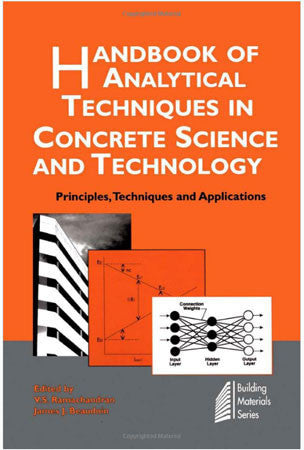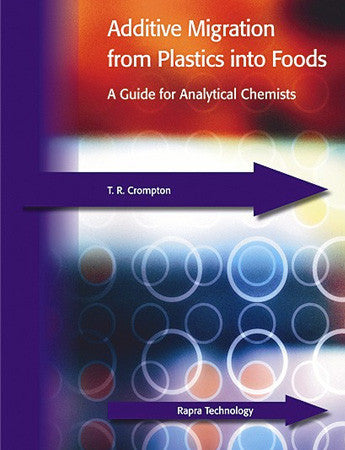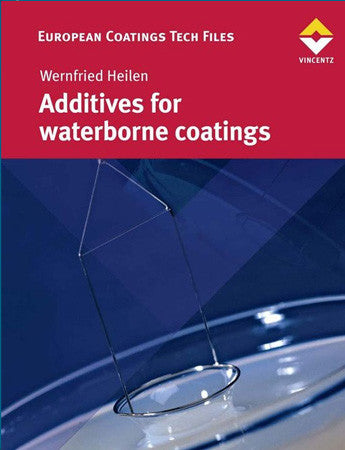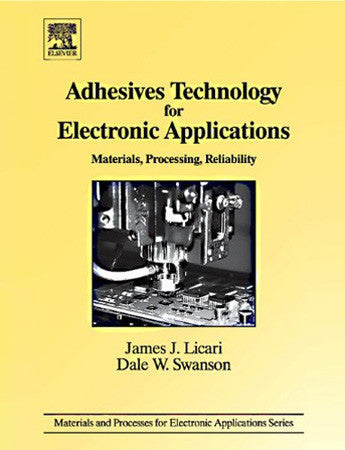Handbook of Analytical Techniques in Concrete
Scientific analysis techniques for a wide variety of concretes and their additives as well as concrete technologies, perfect for practitioners, students, and professional standards writers.
Measuring the long-term durability of new types of concrete and concrete technologies is crucial to their acceptance in the marketplace. This long-needed handbook of analytical techniques provides a complete reference to the cutting-edge procedures used to test today's innovative materials.
Ranging from chemical and thermal analysis, to IR and Nuclear Magnetic Resonance spectroscopy, to Scanning Electron Microscopy, x-ray diffraction, computer modeling and more, the book provides first-hand explanations of modern methods - contributed by 24 leading scientists, many of whom actually developed or refined the techniques. The book includes many analytic techniques, applied to a wide range of organic, inorganic and composite materials and additives.
Perfect for practitioners, students, and professional standards writers, the handbook is highly useful for scrutinizing materials in a variety of environments. It takes into account the many factors that affect the qualities of concrete - temperature, pore and pore size distribution, surface area, and exposure - gathering diverse evaluation methods into one convenient resource.
Preface
Concrete is a composite material formed by mixing and curing ingredients such as cement, fine and coarse aggregates, and water. Most concretes, however, contain additional ingredients such as chemical admixtures including air-entraining admixtures, fly ash, fibers, slag, and other products.
The physical, chemical and durability characteristics of concrete depend on many factors such as the type and amount of the components, temperature, pore and pore size distribution, surface area, interfacial features, exposure conditions, etc. Consequently, a good understanding of various processes occurring in cementitious systems necessitates the application of diverse techniques.
Several physical, chemical, and mechanical techniques are applied in concrete research and practice. They provide important information, including characterization of raw materials and cured concrete, quality control, quantitative estimation of products, prediction of performance, development of accelerated test methods, study of interrelationships amongst physical, chemical, mechanical, and durability characteristics, development of new materials, etc. In most instances, no single technique provides all the needed information and hence application of several techniques becomes necessary. Information on the application of various techniques in concrete is dispersed in literature, and few books are available that serve as a source or reference. Hence a handbook incorporating the latest knowledge on the application of various investigative techniques in concrete science and technology has been prepared. Standard test methods are not covered in this book as they are well described in publications of national and international standards organizations.
The book is divided into twenty chapters. Each chapter describes the technique and its application and limitations for the study of concrete,. Each chapter also contains a list of important references that should serve as a useful guide for further information.
Measuring the long-term durability of new types of concrete and concrete technologies is crucial to their acceptance in the marketplace. This long-needed handbook of analytical techniques provides a complete reference to the cutting-edge procedures used to test today's innovative materials.
Ranging from chemical and thermal analysis, to IR and Nuclear Magnetic Resonance spectroscopy, to Scanning Electron Microscopy, x-ray diffraction, computer modeling and more, the book provides first-hand explanations of modern methods - contributed by 24 leading scientists, many of whom actually developed or refined the techniques. The book includes many analytic techniques, applied to a wide range of organic, inorganic and composite materials and additives.
Perfect for practitioners, students, and professional standards writers, the handbook is highly useful for scrutinizing materials in a variety of environments. It takes into account the many factors that affect the qualities of concrete - temperature, pore and pore size distribution, surface area, and exposure - gathering diverse evaluation methods into one convenient resource.
Preface
Concrete is a composite material formed by mixing and curing ingredients such as cement, fine and coarse aggregates, and water. Most concretes, however, contain additional ingredients such as chemical admixtures including air-entraining admixtures, fly ash, fibers, slag, and other products.
The physical, chemical and durability characteristics of concrete depend on many factors such as the type and amount of the components, temperature, pore and pore size distribution, surface area, interfacial features, exposure conditions, etc. Consequently, a good understanding of various processes occurring in cementitious systems necessitates the application of diverse techniques.
Several physical, chemical, and mechanical techniques are applied in concrete research and practice. They provide important information, including characterization of raw materials and cured concrete, quality control, quantitative estimation of products, prediction of performance, development of accelerated test methods, study of interrelationships amongst physical, chemical, mechanical, and durability characteristics, development of new materials, etc. In most instances, no single technique provides all the needed information and hence application of several techniques becomes necessary. Information on the application of various techniques in concrete is dispersed in literature, and few books are available that serve as a source or reference. Hence a handbook incorporating the latest knowledge on the application of various investigative techniques in concrete science and technology has been prepared. Standard test methods are not covered in this book as they are well described in publications of national and international standards organizations.
The book is divided into twenty chapters. Each chapter describes the technique and its application and limitations for the study of concrete,. Each chapter also contains a list of important references that should serve as a useful guide for further information.
The first chapter on concrete science describes the essential concepts so that information presented in subsequent chapters can be easily followed. The chapter deals with the formation of cement, its hydration behavior, physicochemical processes related to the cement paste, and several important properties of concrete and durability aspects.
Chapter 2 deals with the description of a number of specialized techniques used in conjunction with petrography for the evaluation and analysis of aggregates of concrete.
Chemical analysis methods have been applied extensively to analyze the components of concrete, chemical and mineral admixtures, raw materials for making cement and also to estimate cement contents. Modern analytical tools enable much faster analysis than the wet chemical methods.
In Chapter 3, chemical analysis techniques reviewed include atomic absorption, x-ray emission and plasma spectroscopy. The chapter also contains information on chemical (wet) methods of analysis.
Thermal analysis techniques based on the determination of physical, chemical, and mechanical changes in a material as a function of temperature, have been routinely used in concrete science and technology. Identification, estimation of compounds, kinetics of reactions, mechanisms of the action of admixtures, synthesis of compounds, quality control and causes leading to the deterioration of cementitious materials are investigated by these techniques. Various types of thermal techniques and their applications and limitations are included in Chapter 4.
Although comparatively recent, IR spectroscopy is gaining importance, especially with the development of user-friendly equipment as described in the fifth chapter. This technique has been applied for identification of new products and characterization of raw materials, hydrated materials, and deteriorated products. Discussion on Raman spectroscopy, a complementary technique to IR, also forms a part of this chapter.
Nuclear Magnetic Resonance spectroscopy (NMR) is a effective tool to probe atomic scale structure and dynamic behavior of cementing materials. The application of NMR for determining the pore structure and transport properties of cement and concrete via relaxation and imaging methods and its application to anhydrous cement and hydrated cement phases form some of the contents of Chapter 6.
Scanning Electron Microscopy and its adjunct, microanalytical unit, known as Energy Dispersive X-ray Analyzer, have been accepted as important investigative techniques in concrete technology.
Chapter 7 comprises discussion on the microstructure of hydrated cement paste, C-S-H phase, calcium hydroxide, aluminate hydrate phases, paste-aggregate interface, admixtures, slags, and fly ashes. Also included are studies on the correlation of microstructure with durability.
The eighth chapter on the application of x-ray diffraction focuses on some of the fundamental aspects of the technique, the hardware and software developments, and its applications to cement and concrete.
An understanding of the Theology of fresh cement paste and concrete is essential for following the behavior of concrete in the fresh state. Additions and admixtures in concrete alter its Theological behavior.
Chapter 9 deals with Theological techniques and their application to fresh cement paste and concrete.
Dimensional changes occur in cement paste and concrete due to physical, chemical, and electrochemical processes. A discussion of energetics of surface adsorption and volume changes forms the scope of Chapter 10. Relevance of length changes to concrete deterioration is also highlighted in this chapter.
The use of miniature specimens in cement science investigations has proven to be very valuable because it assures a greater homogeneity of the sample and increased sensitivity to the dimensional changes resulting from physical and chemical processes.
Chapter 11 provides results on compacted powder used as a model system and includes discussion on creep and shrinkage, volume stability, workability, and surface chemical changes.
Corrosion of reinforced concrete is a major destructive process. Many electrochemical techniques have been developed to study corrosion.
Chapter 12 presents a comprehensive treatment of the principles of corrosion, factors responsible for corrosion, and corrosion assessment techniques relevant to concrete.
Surface area has an important influence on the rate of reaction of cement to water and other chemicals. Many physical and mechanical characteristics of cement and concrete are modified by changes in the surface area.
In Chapter 13, the techniques that are used for measuring surface area are given with respect to their application to systems such as raw materials for cement, hydrated cement, concrete mix, and also to durability studies.
The pore structure of hydrated cement systems influences significantly the physico-mechanical and chemical behavior of concrete. Several experimental techniques have been employed to evaluate the microstructure of the cement paste.
Chapter 14 presents a description of six techniques that have been developed for the determination of pore structure. The relationship between pore structure and strength/permeability is also included.
The application of silica polymerization analysis for an understanding of the hydration process and structure of calcium silicate hydrates is detailed in Chapter 15. Three major techniques used for polymerization studies are described.
In concrete, the physical structure and the state of water in the matrix influences the permeation process.
In Chapter 16, test methods that are employed to measure various transport characteristics of concrete are evaluated. The applicability and limitations of these techniques is also reviewed.
Inspection and testing of placed concrete may be carried out by nondestructive testing methods. Sonic and pulse velocity techniques are commonly used. Nondestructive methods are also applied to estimate strength, surface hardness, pullout strength, etc. Details of various nondestructive techniques and their applications are included in Chapter 17.
There is evidence of a significant impact of computer and information technologies on concrete science and technology. General development of these technologies in recent years is reviewed in Chapter 18. The treatment includes computer models, databases, artificial knowledge-based and computer-integrated systems.
In Chapter 19, entitled "Image Analysis," steps needed to identify reactions of interest and extract quantitative information from digital images are reviewed. In image analysis, multiple images are acquired and analyzed. The principle steps required for image analysis of cementitious materials are described in this chapter.
Some of the more commonly used techniques in concrete studies are presented in Chapters 2 to 19. There has been continued interest in developing new techniques for the investigation of cement and concrete.
Chapter 20 comprises the description and application of fourteen of these specialized techniques. They include such techniques as Auger Electron Microscopy, Chromatography, Mass Spectrometry, X-Ray Absorption Fine Structure Analysis, Synchrotron Orbital Radiation Analysis, Mossbauer Spectrometry, Radio Tracer Technique, and Photoacoustic Spectroscopy.
Although every attempt has been made to cover the important investigative techniques used in concrete technology, it is quite possible that some information has been excluded or is missing. In addition, some duplication of information occurs in some chapters. This was intentional because some specific chapters may only be of interest to specialized groups, and they provide enough self-contained information so that gleaning through other chapters will not be needed.
This comprehensive handbook should serve as a reference material to concrete technologists, materials scientists, analytical chemists, engineers, architects, researchers, manufacturers of cement and concrete, standards writing bodies, and users of concrete.
Chapter 2 deals with the description of a number of specialized techniques used in conjunction with petrography for the evaluation and analysis of aggregates of concrete.
Chemical analysis methods have been applied extensively to analyze the components of concrete, chemical and mineral admixtures, raw materials for making cement and also to estimate cement contents. Modern analytical tools enable much faster analysis than the wet chemical methods.
In Chapter 3, chemical analysis techniques reviewed include atomic absorption, x-ray emission and plasma spectroscopy. The chapter also contains information on chemical (wet) methods of analysis.
Thermal analysis techniques based on the determination of physical, chemical, and mechanical changes in a material as a function of temperature, have been routinely used in concrete science and technology. Identification, estimation of compounds, kinetics of reactions, mechanisms of the action of admixtures, synthesis of compounds, quality control and causes leading to the deterioration of cementitious materials are investigated by these techniques. Various types of thermal techniques and their applications and limitations are included in Chapter 4.
Although comparatively recent, IR spectroscopy is gaining importance, especially with the development of user-friendly equipment as described in the fifth chapter. This technique has been applied for identification of new products and characterization of raw materials, hydrated materials, and deteriorated products. Discussion on Raman spectroscopy, a complementary technique to IR, also forms a part of this chapter.
Nuclear Magnetic Resonance spectroscopy (NMR) is a effective tool to probe atomic scale structure and dynamic behavior of cementing materials. The application of NMR for determining the pore structure and transport properties of cement and concrete via relaxation and imaging methods and its application to anhydrous cement and hydrated cement phases form some of the contents of Chapter 6.
Scanning Electron Microscopy and its adjunct, microanalytical unit, known as Energy Dispersive X-ray Analyzer, have been accepted as important investigative techniques in concrete technology.
Chapter 7 comprises discussion on the microstructure of hydrated cement paste, C-S-H phase, calcium hydroxide, aluminate hydrate phases, paste-aggregate interface, admixtures, slags, and fly ashes. Also included are studies on the correlation of microstructure with durability.
The eighth chapter on the application of x-ray diffraction focuses on some of the fundamental aspects of the technique, the hardware and software developments, and its applications to cement and concrete.
An understanding of the Theology of fresh cement paste and concrete is essential for following the behavior of concrete in the fresh state. Additions and admixtures in concrete alter its Theological behavior.
Chapter 9 deals with Theological techniques and their application to fresh cement paste and concrete.
Dimensional changes occur in cement paste and concrete due to physical, chemical, and electrochemical processes. A discussion of energetics of surface adsorption and volume changes forms the scope of Chapter 10. Relevance of length changes to concrete deterioration is also highlighted in this chapter.
The use of miniature specimens in cement science investigations has proven to be very valuable because it assures a greater homogeneity of the sample and increased sensitivity to the dimensional changes resulting from physical and chemical processes.
Chapter 11 provides results on compacted powder used as a model system and includes discussion on creep and shrinkage, volume stability, workability, and surface chemical changes.
Corrosion of reinforced concrete is a major destructive process. Many electrochemical techniques have been developed to study corrosion.
Chapter 12 presents a comprehensive treatment of the principles of corrosion, factors responsible for corrosion, and corrosion assessment techniques relevant to concrete.
Surface area has an important influence on the rate of reaction of cement to water and other chemicals. Many physical and mechanical characteristics of cement and concrete are modified by changes in the surface area.
In Chapter 13, the techniques that are used for measuring surface area are given with respect to their application to systems such as raw materials for cement, hydrated cement, concrete mix, and also to durability studies.
The pore structure of hydrated cement systems influences significantly the physico-mechanical and chemical behavior of concrete. Several experimental techniques have been employed to evaluate the microstructure of the cement paste.
Chapter 14 presents a description of six techniques that have been developed for the determination of pore structure. The relationship between pore structure and strength/permeability is also included.
The application of silica polymerization analysis for an understanding of the hydration process and structure of calcium silicate hydrates is detailed in Chapter 15. Three major techniques used for polymerization studies are described.
In concrete, the physical structure and the state of water in the matrix influences the permeation process.
In Chapter 16, test methods that are employed to measure various transport characteristics of concrete are evaluated. The applicability and limitations of these techniques is also reviewed.
Inspection and testing of placed concrete may be carried out by nondestructive testing methods. Sonic and pulse velocity techniques are commonly used. Nondestructive methods are also applied to estimate strength, surface hardness, pullout strength, etc. Details of various nondestructive techniques and their applications are included in Chapter 17.
There is evidence of a significant impact of computer and information technologies on concrete science and technology. General development of these technologies in recent years is reviewed in Chapter 18. The treatment includes computer models, databases, artificial knowledge-based and computer-integrated systems.
In Chapter 19, entitled "Image Analysis," steps needed to identify reactions of interest and extract quantitative information from digital images are reviewed. In image analysis, multiple images are acquired and analyzed. The principle steps required for image analysis of cementitious materials are described in this chapter.
Some of the more commonly used techniques in concrete studies are presented in Chapters 2 to 19. There has been continued interest in developing new techniques for the investigation of cement and concrete.
Chapter 20 comprises the description and application of fourteen of these specialized techniques. They include such techniques as Auger Electron Microscopy, Chromatography, Mass Spectrometry, X-Ray Absorption Fine Structure Analysis, Synchrotron Orbital Radiation Analysis, Mossbauer Spectrometry, Radio Tracer Technique, and Photoacoustic Spectroscopy.
Although every attempt has been made to cover the important investigative techniques used in concrete technology, it is quite possible that some information has been excluded or is missing. In addition, some duplication of information occurs in some chapters. This was intentional because some specific chapters may only be of interest to specialized groups, and they provide enough self-contained information so that gleaning through other chapters will not be needed.
This comprehensive handbook should serve as a reference material to concrete technologists, materials scientists, analytical chemists, engineers, architects, researchers, manufacturers of cement and concrete, standards writing bodies, and users of concrete.
Dr. V.S. Ramachandran is Distinguished Researcher at the Institute for Research in Construction, National Research Council Canada, Ottawa, Canada. He is author of six other books and numerous articles. Dr. Ramachandran is a Fellow of the Royal Society of Chemistry, the Ceramic Society (UK), the American Ceramic Society, and is the recipient of many awards and honors for his scientific accomplishments in the concrete and ceramic fields Dr. James J. Beaudoin is Principal Research Officer at the Institute for Research in Construction, National Research Council Canada, Ottawa, Canada. He is author of over 300 publications, including three books, and holds several patents. He received the Copeland Award from the American Ceramic Society in 1998 and the American Concrete Institute Wason Medal for materials research in 1999.




